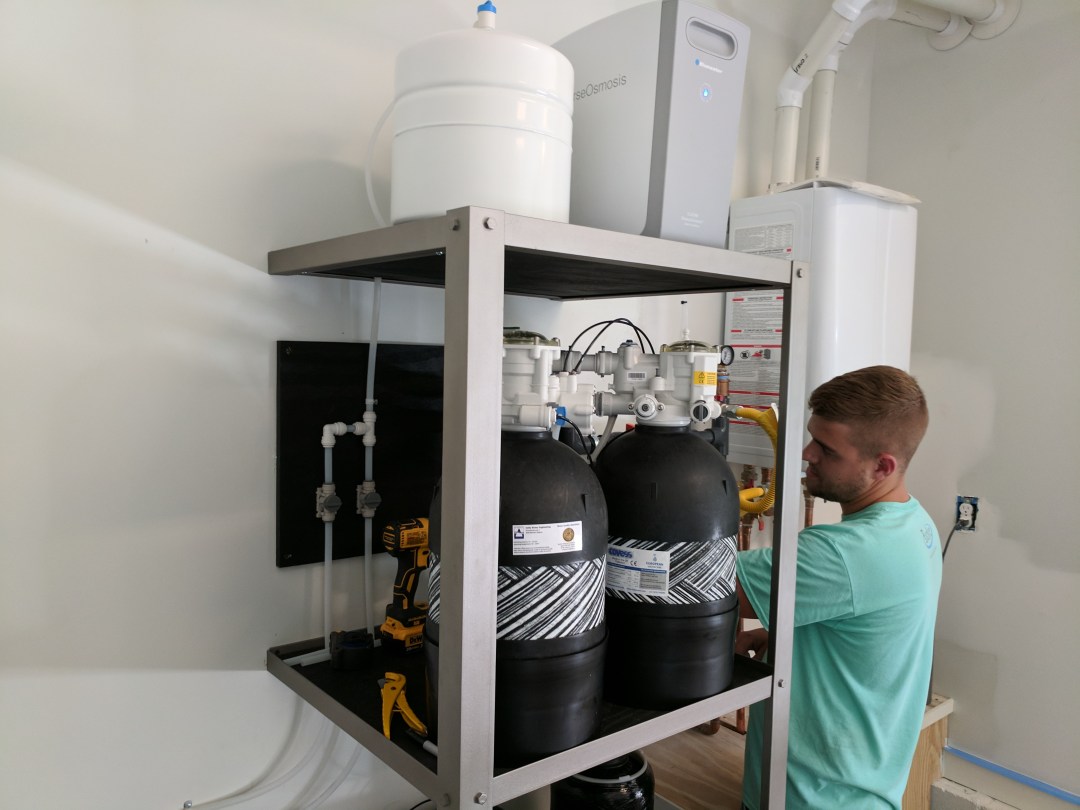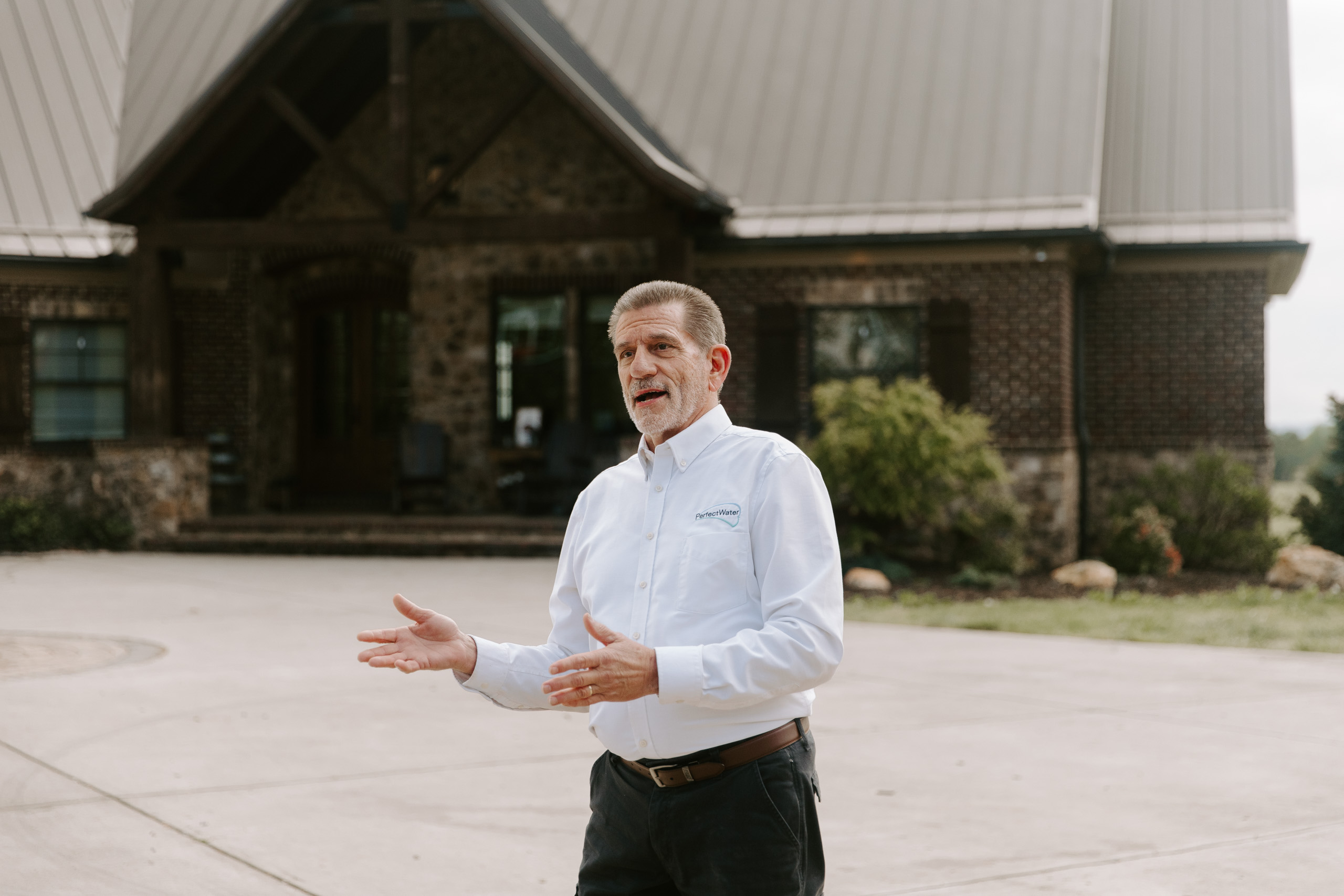Comparison: Reverse Osmosis, Water Softening, and Dechlorination

The purpose of this article is to explain the difference between the three most common filtration methods that we recommend – and almost always recommend them together as a combined system.
Reverse Osmosis, Water Softening, and Dechlorination. I am going to go through each of these and try to practically explain the differences in a useful way.
Drinking Water and Whole-House Water
Before I dive into the the three methods, the difference between drinking water and whole-house water must first be discussed.
In the residential water purification world, these two categories are split up by use. Meaning whole-house water refers to coming out of every normal faucet, and drinking water referring to any water that is intended to be consumed.
Whole-House Water = bathroom sinks, kitchen sinks, shower heads, and tub faucets.
Drinking Water = drinking water faucets in the kitchen or bathroom, ice machines, coffee makers, and pot fillers.
*Outside spigots for irrigation are often left untreated.
With this understanding, it is much easier to make sense of the three methods.
Dechlorination (Whole-House)
Like it says in the description, dechlorination treats the whole-house water. No water enters the home without being dechlorinated.
What is Dechlorination?
Dechlorination removes chlorine/chloramine from the water and other organic contaminants.
You can read this article to learn more about dechlorination, “Why You Want Chlorine-Free Water in Your Home“, but for the purpose of this article, I only wanted to give an overview.
Water Softening (Whole-House)
This method is also used for the whole-house water. No water enters the home without being softened.
What is Water Softening?
Water softening removes “hardness” from water, which is the contaminants calcium and magnesium. This is what scales up on glass and in plumbing.
You can learn more about the effects of hard water by reading this article, ” 6 Ways Hard Water Impacts Your Life That You May Not Know“.
Reverse Osmosis (Drinking Water)
As stated, Reverse Osmosis is for drinking water.
What is Reverse Osmosis?
Reverse Osmosis removes 95%-99% of all contaminants in the water. This includes inorganics, heavy metals, chemicals, pharmaceuticals, biocides, and much more. It is the highest level of purity available for residential use.
Check out this article, “A Comprehensive List of Common Municipal Water Contaminants”, to see all the contaminants the EPA says are present or likely to be present in municipal (city) water.
You can also check out this article to learn more about reverse osmosis, “The Benefits of Reverse Osmosis“.
If I Have Water Softening and Dechlorination, Isn’t the Water Being Filtered to Drinking Quality?
This is a common way of thinking, but it’s a misunderstanding.
Whole-house water doesn’t need to be as pure as water that will be consumed.
It is true that dechlorinated whole-house water is free of chlorine, but reverse osmosis zooms in and removes ALL unhealthy contaminants and guarantees great tasting water all the time.
Have questions? Contact me at ezekiel@4perfectwater.com, or contact our team!
Want to learn even more about whole-home water purification in Knoxville and Nashville? Check out our Knoxville and Nashville Residents Guide to Water Purification.

Ready to Take Control of Your Water Supply?
Don’t wait for water shortages or unreliable sources to disrupt your life. With our Rainwater Harvesting systems, you can enjoy a sustainable, reliable, and completely self-sufficient water solution tailored to your home’s needs.

